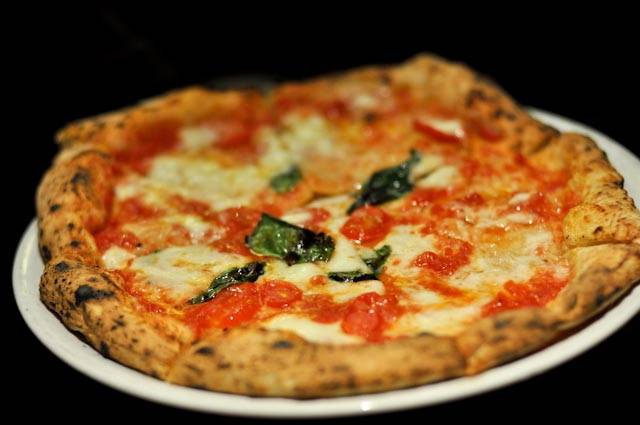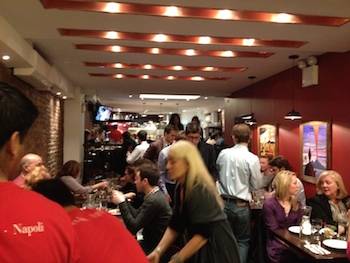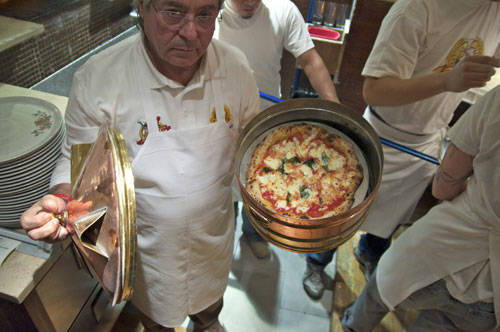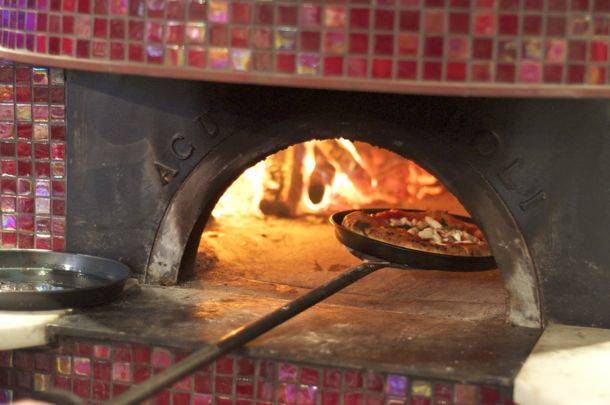What’s in a Pizza? Our History
For the last three years, Starita’s operation has expanded to include New York, where the pizzeria has showcased the practice and culture of the true “mastro pizzaiolo.” It’s tough to get your fill – of knowledge, at least – in the New York restaurant Antonio Starita runs with Roberto Caporuscio at 309 West50th Street; after tasting the same masterpieces he’s prepared in Naples, you can’t help but want to know more.
So I set out to ask Don Antonio a few questions. At the beginning of the 19th century, Don Antonio’s great grandfather – also named Antonio – and his wife Giuseppina opened a small restaurant where they served simple working- class dishes like fried anchovies, fried baccalà, and tripe.
Alongside these dishes were pizzas, also often fried. Many customers paid on credit, since they couldn’t afford to pay upfront. What began with Antonio and Giuseppina has evolved over a century later into one of the most famous authentic Neapolitan pizzerias in the world. It was even featured in the film L’Oro di Napoli (The Gold of Naples) starring Sofia Loren.
Don Antonio, What’s in a Pizza?
Renowned experts have told us what Neapolitan pizza is. They’ve written about it in books... All that I know I inherited from my family: what kind of flour to use, what proportions of flour and water, how to wield a wooden pizza paddle, how to use your hands to make a perfect dough. Sure, in the old days, the pizzas were really good, really genuine, but they were extraordinarily simple. Today you have to be careful with the products you use.
So what makes a pizza today an authentic pizza napoletana?
There’s a lot more that goes into it than just pizza. There’s the history of the Neapolitan people and the shops where you did the frying, cooking, baking. Naples created these things. Then slowly they began to export pizza.
Unfortunately, in the beginning, what the world tasted wasn’t authentic pizza, born of the experience and tradition of the Neapolitan pizzaioli. Pizza may have seemed easy to make to
the first Italian emigrants, but oftentimes they weren’t pizzaioli and didn’t know the true art of pizza making. So they improvised.
How can you distinguish a real pizzaiolo?
Real pizza has secrets, if I can call them that, and in the old days these secrets were passed down generation to generation among families. They were simple techniques, but they required a lot of experience and hard work. Those who make real pizza do it with love, in the truest sense of that word.
Do you mean to say that the real thing can’t be exported – that the art of pizza making can’t be taught? Or innovated? Or reinterpreted?
Not really. You can teach pizza making]today... actually, people should be taught! Innovation, however, is the special gift of the pizzaiolo.
Each one of us pizzaioli has something inside him that he has to learn to develop. It's like with soccer players: some players run well, others know how to handle the ball. The gifted pizzaiolo has good taste and looks for new ingredients. He invents pizzas.
But innovation doesn’t mean anything other than using new ingredients on a classic ball of dough that’s been rolled the right way. Until you know how to make the same dough every time, you have to respect tradition. If you change the rules from the start, you run into problems. And if there’s no wood-burning oven, well, there are certain aspects that must be preserved and passed down.
So you think anyone can learn how to make pizza, even abroad?
Yes, absolutely. You have to start with the Neapolitan masters. Then you need passion and talent. But is it really possible to overcome the issue of not finding the right ingredients or ingredients of a different quality?
Of course it’s a lot easier in Naples! The ingredients of our pizzas pay tribute to our land: the small tomatoes, the mozzarella, the oil. Our land is kissed by the sun. In America it’s much harder.
Indeed. But you and Roberto Caporuscio have taken up the challenge. And you’ve succeeded.
I have to admit I wouldn’t have succeeded without Roberto, without the strength of a pizzaiolo with roots in America who had the smarts to listen to my advice. He has come up with a pizza that would be enviable even in Naples.
You’re friendly, easygoing, and good-humored, but you also have a very serious, hardworking side. I can see how you charm the young people entering the world of pizza making, and I know you—and Roberto—consider Neapolitan pizza making to be a mission. But what else do you get out of teaching.
I hope that by teaching, the quality of pizza never declines. If out of 100 students, only four learn the proper way, those four become my pride and joy. Many students still write me. I feel proud of leaving something behind. It means I’ve made
it! And passing on your art to family or friends is an even greater feeling, as happened with my son and Roberto’s daughter, Giorgia. Have you seen the beautiful pizzas she makes?
[A beaming Roberto Caporuscio can’t resist butting in: “Don Antonio took her by the hand. He knew how to teach her. He played to her female pride, reminding her how very few female pizzaioli there are...”]
One pizza that’s very popular here in New York, that sells as much as the classic Margherita, is called the Montanara. That was the pizza for which Giorgia was awarded the 2013 Classical Pizza Championship. How did that come about?
It’s just recycled pizza. During the difficult postwar years in Italy, it was common to save every scrap of food, to leave something for the next day. If you made ragu, you set some aside. The next day you’d make a sort of “zeppola” out of the leftovers: you took a bit of dough, spread the ragu’ on top and fried it. I just went back to that recipe and did all I could to make it resemble the Margherita, except I added smoked buffalo mozzarella and grated cheese to it before sliding it into the oven. It took a lot of trial and error before I could present to my customers what became known and loved as Pizza Montanara.
One last question for the pizza guru that runs between Naples and New York: Before unveiling a new pizza, how many times do you test it out?
A lot. And I don’t do it alone. My whole family in Naples has gotten involved in taste testing, as do Roberto and Giorgia here in New York. They do experiments to
create Neapolitan pizzas with ingredients from other regions of Italy. They’re creating real masterpieces. But maybe we should talk about them some other time...
Can’t wait—to talk and to taste! Till next time, Don Antonio!
Don Antonio by Starita
309 W. 50th Street
(W 50th St. Between 8th Ave. And 9th Ave.)
New York, NY 10016








































i-Italy
Facebook
Google+
This work may not be reproduced, in whole or in part, without prior written permission.
Questo lavoro non può essere riprodotto, in tutto o in parte, senza permesso scritto.